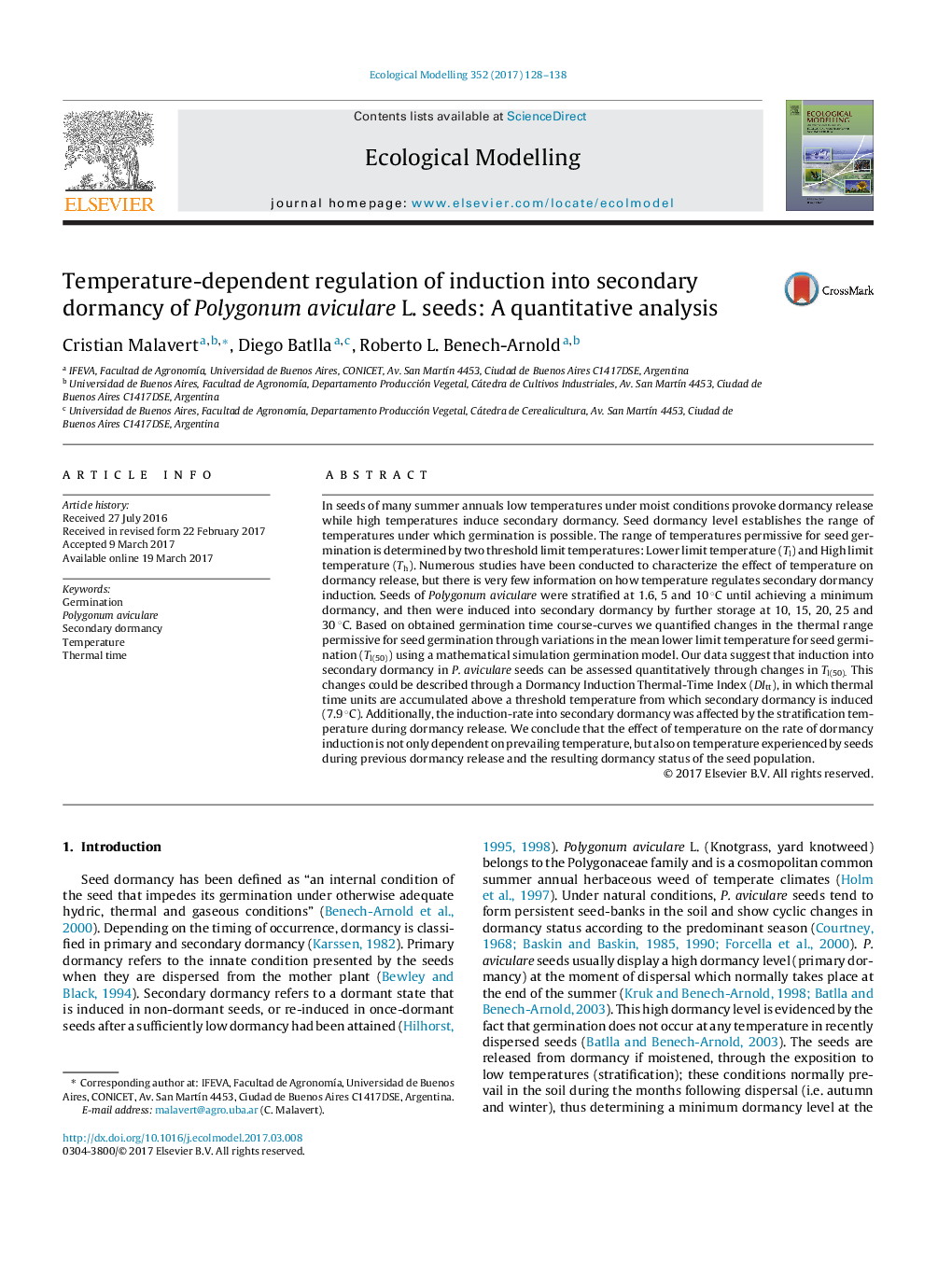| کد مقاله | کد نشریه | سال انتشار | مقاله انگلیسی | نسخه تمام متن |
|---|---|---|---|---|
| 5742253 | 1617395 | 2017 | 11 صفحه PDF | دانلود رایگان |

- Environmental control of secondary dormancy induction and, in particular, its quantitative aspects, has been much less studied.
- Changes in the thermal range for seed germination (variations in the mean lower limit temperature for seed germination Tl(50)), were quantified.
- A simple thermal time model was developed to predict changes in the Tl(50) during secondary dormancy induction.
- Dormancy induction rate is not only dependent on prevailing temperature, but also on temperature experienced by seeds during dormancy release.
In seeds of many summer annuals low temperatures under moist conditions provoke dormancy release while high temperatures induce secondary dormancy. Seed dormancy level establishes the range of temperatures under which germination is possible. The range of temperatures permissive for seed germination is determined by two threshold limit temperatures: Lower limit temperature (Tl) and High limit temperature (Th). Numerous studies have been conducted to characterize the effect of temperature on dormancy release, but there is very few information on how temperature regulates secondary dormancy induction. Seeds of Polygonum aviculare were stratified at 1.6, 5 and 10 °C until achieving a minimum dormancy, and then were induced into secondary dormancy by further storage at 10, 15, 20, 25 and 30 °C. Based on obtained germination time course-curves we quantified changes in the thermal range permissive for seed germination through variations in the mean lower limit temperature for seed germination (Tl(50)) using a mathematical simulation germination model. Our data suggest that induction into secondary dormancy in P. aviculare seeds can be assessed quantitatively through changes in Tl(50). This changes could be described through a Dormancy Induction Thermal-Time Index (DItt), in which thermal time units are accumulated above a threshold temperature from which secondary dormancy is induced (7.9 °C). Additionally, the induction-rate into secondary dormancy was affected by the stratification temperature during dormancy release. We conclude that the effect of temperature on the rate of dormancy induction is not only dependent on prevailing temperature, but also on temperature experienced by seeds during previous dormancy release and the resulting dormancy status of the seed population.
Journal: Ecological Modelling - Volume 352, 24 May 2017, Pages 128-138